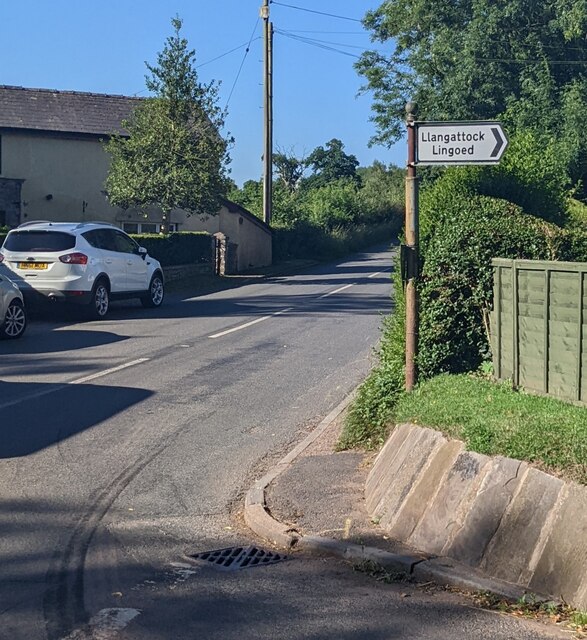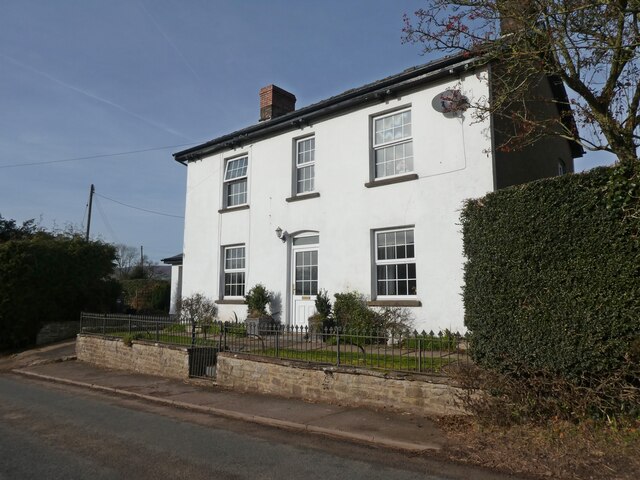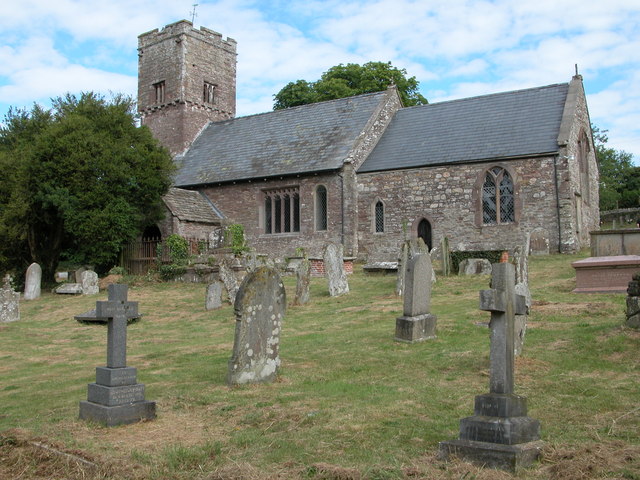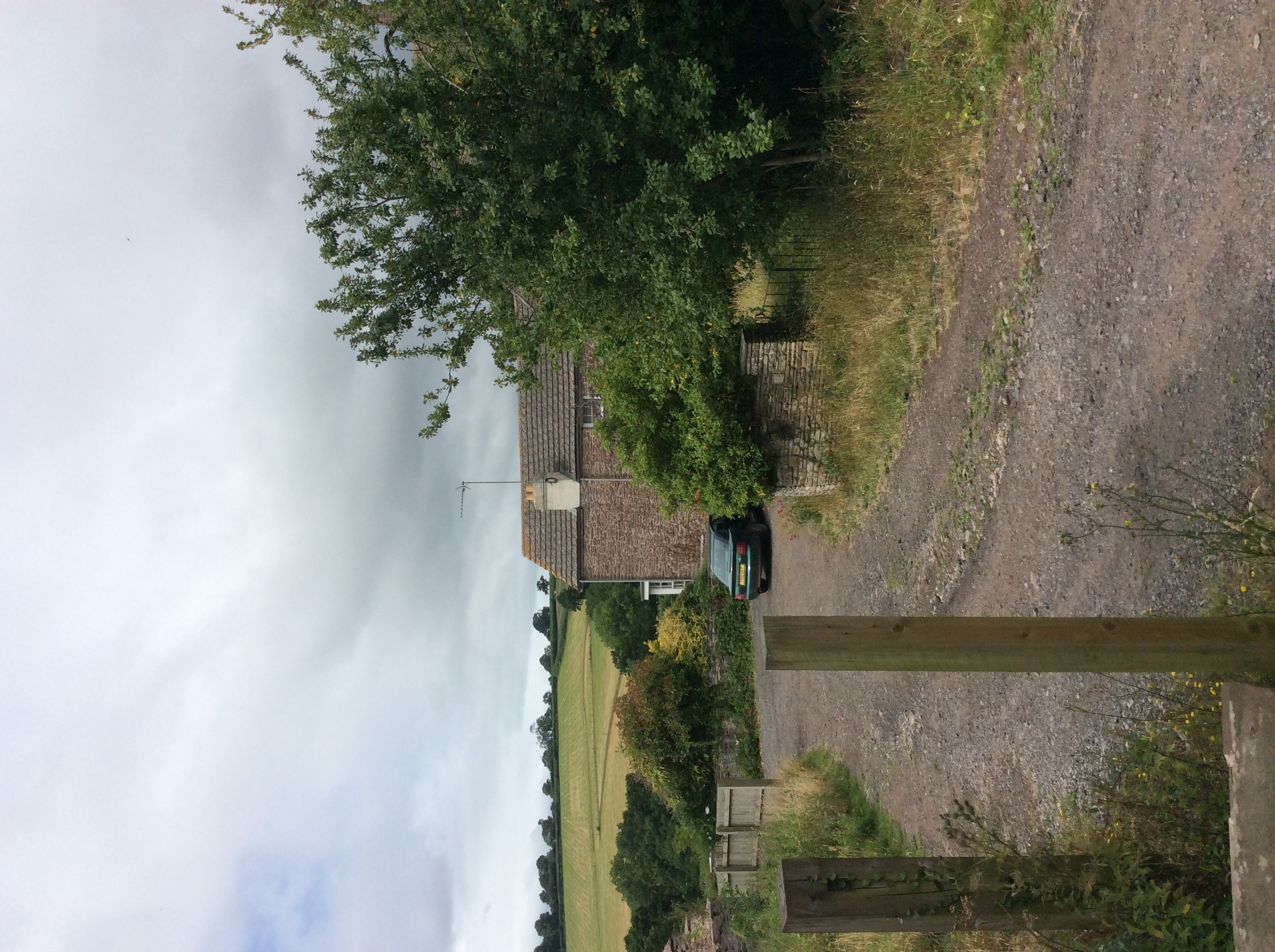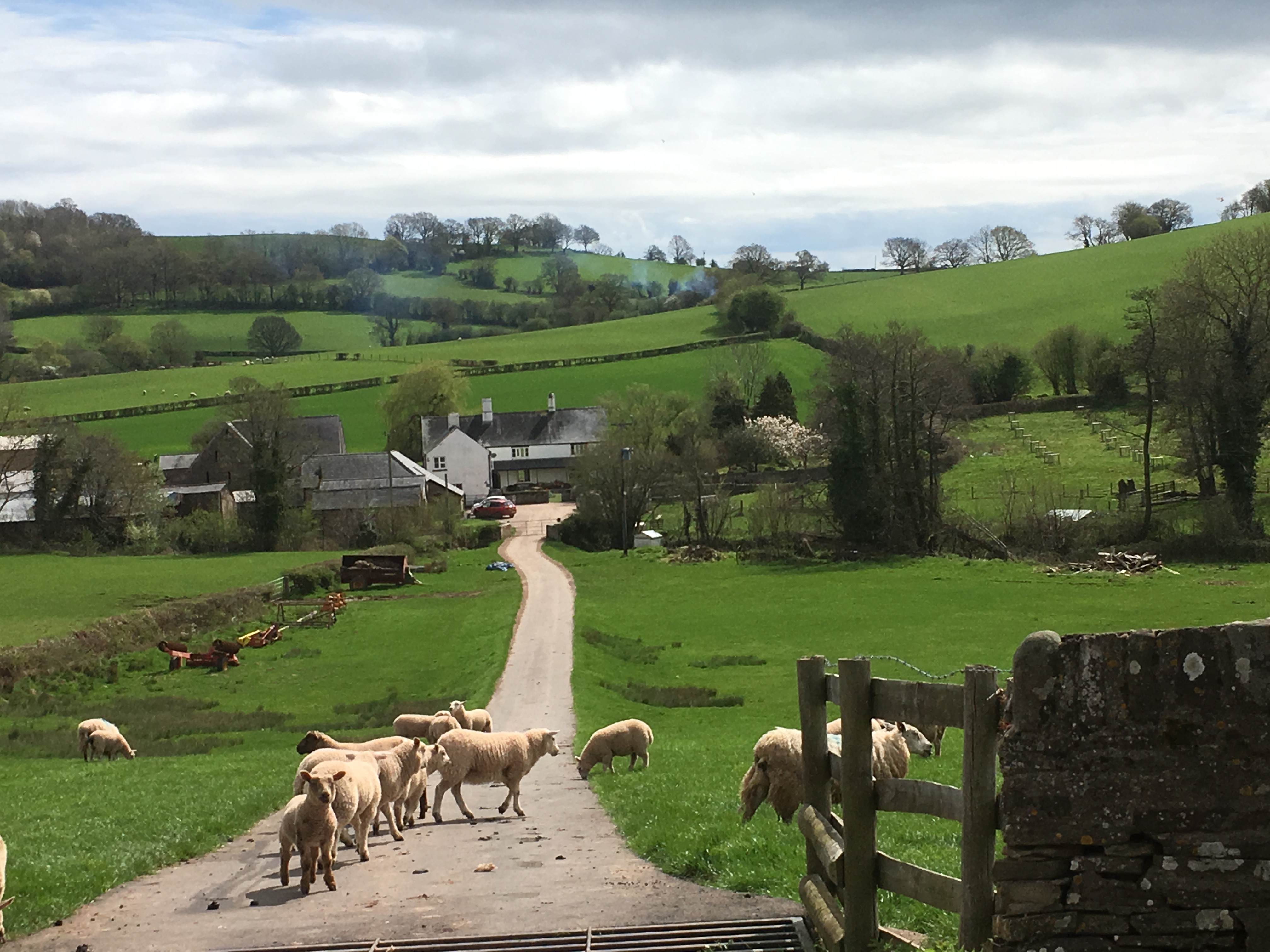Llanwytherin
Settlement in Monmouthshire
Wales
Llanwytherin

Llanwytherin is a small village located in Monmouthshire, Wales. It is situated in the picturesque countryside, surrounded by rolling hills and lush green fields. The village is known for its tranquil and rural setting, making it a popular destination for those seeking a peaceful retreat.
Llanwytherin is home to a close-knit community, with a population of around 300 residents. The village has a church, a primary school, and a few small shops and businesses. The architecture in Llanwytherin is predominantly traditional Welsh, with stone cottages and farmhouses dotting the landscape.
The village is well-connected to nearby towns and cities, with good road links making it easy to access amenities and services. Llanwytherin is also within close proximity to the stunning Brecon Beacons National Park, offering residents and visitors ample opportunities for outdoor activities such as hiking, cycling, and wildlife spotting.
Overall, Llanwytherin is a charming and idyllic village that offers a quiet and peaceful way of life in the beautiful Welsh countryside.
If you have any feedback on the listing, please let us know in the comments section below.
Llanwytherin Images
Images are sourced within 2km of 51.850375/-2.920857 or Grid Reference SO3617. Thanks to Geograph Open Source API. All images are credited.
![White Castle [1] An information board about White Castle being one of three.
White Castle (Welsh: Castell Gwyn), also known historically as Llantilio Castle, is sited near the village of Llantilio Crossenny in Monmouthshire. The first castle, of earth and timber, was probably built soon after the Norman conquest. The castle was rebuilt in stone in the early 13th century with curtain walls, mural towers and a gatehouse. In the mid 13th century the large outer ward was enclosed with a curtain wall and its own gatehouse. The castle never saw action, became disused and was in ruins by the early 17th century. The ruins are of red sandstone rubble stone, with ashlar dressings. The remains are in the care of Cadw and are listed, grade I, with details at: <span class="nowrap"><a title="https://cadwpublic-api.azurewebsites.net/reports/listedbuilding/FullReport?lang=&amp;id=" rel="nofollow ugc noopener" href="https://cadwpublic-api.azurewebsites.net/reports/listedbuilding/FullReport?lang=&amp;id=">Link</a><img style="margin-left:2px;" alt="External link" title="External link - shift click to open in new window" src="https://s1.geograph.org.uk/img/external.png" width="10" height="10"/></span> 2079 The site is a Scheduled Ancient Monument with details at: <span class="nowrap"><a title="https://cadwpublic-api.azurewebsites.net/reports/sam/FullReport?lang=&amp;id=" rel="nofollow ugc noopener" href="https://cadwpublic-api.azurewebsites.net/reports/sam/FullReport?lang=&amp;id=">Link</a><img style="margin-left:2px;" alt="External link" title="External link - shift click to open in new window" src="https://s1.geograph.org.uk/img/external.png" width="10" height="10"/></span> 2957](https://s2.geograph.org.uk/geophotos/07/56/21/7562146_9a8f2e7c.jpg)
![White Castle [2] The remains of the gatehouse leading into the outer ward.
White Castle (Welsh: Castell Gwyn), also known historically as Llantilio Castle, is sited near the village of Llantilio Crossenny in Monmouthshire. The first castle, of earth and timber, was probably built soon after the Norman conquest. The castle was rebuilt in stone in the early 13th century with curtain walls, mural towers and a gatehouse. In the mid 13th century the large outer ward was enclosed with a curtain wall and its own gatehouse. The castle never saw action, became disused and was in ruins by the early 17th century. The ruins are of red sandstone rubble stone, with ashlar dressings. The remains are in the care of Cadw and are listed, grade I, with details at: <span class="nowrap"><a title="https://cadwpublic-api.azurewebsites.net/reports/listedbuilding/FullReport?lang=&amp;id=" rel="nofollow ugc noopener" href="https://cadwpublic-api.azurewebsites.net/reports/listedbuilding/FullReport?lang=&amp;id=">Link</a><img style="margin-left:2px;" alt="External link" title="External link - shift click to open in new window" src="https://s1.geograph.org.uk/img/external.png" width="10" height="10"/></span> 2079 The site is a Scheduled Ancient Monument with details at: <span class="nowrap"><a title="https://cadwpublic-api.azurewebsites.net/reports/sam/FullReport?lang=&amp;id=" rel="nofollow ugc noopener" href="https://cadwpublic-api.azurewebsites.net/reports/sam/FullReport?lang=&amp;id=">Link</a><img style="margin-left:2px;" alt="External link" title="External link - shift click to open in new window" src="https://s1.geograph.org.uk/img/external.png" width="10" height="10"/></span> 2957](https://s0.geograph.org.uk/geophotos/07/56/21/7562148_74752bd1.jpg)
![White Castle [3] An information board about the development of the castle.
White Castle (Welsh: Castell Gwyn), also known historically as Llantilio Castle, is sited near the village of Llantilio Crossenny in Monmouthshire. The first castle, of earth and timber, was probably built soon after the Norman conquest. The castle was rebuilt in stone in the early 13th century with curtain walls, mural towers and a gatehouse. In the mid 13th century the large outer ward was enclosed with a curtain wall and its own gatehouse. The castle never saw action, became disused and was in ruins by the early 17th century. The ruins are of red sandstone rubble stone, with ashlar dressings. The remains are in the care of Cadw and are listed, grade I, with details at: <span class="nowrap"><a title="https://cadwpublic-api.azurewebsites.net/reports/listedbuilding/FullReport?lang=&amp;id=" rel="nofollow ugc noopener" href="https://cadwpublic-api.azurewebsites.net/reports/listedbuilding/FullReport?lang=&amp;id=">Link</a><img style="margin-left:2px;" alt="External link" title="External link - shift click to open in new window" src="https://s1.geograph.org.uk/img/external.png" width="10" height="10"/></span> 2079 The site is a Scheduled Ancient Monument with details at: <span class="nowrap"><a title="https://cadwpublic-api.azurewebsites.net/reports/sam/FullReport?lang=&amp;id=" rel="nofollow ugc noopener" href="https://cadwpublic-api.azurewebsites.net/reports/sam/FullReport?lang=&amp;id=">Link</a><img style="margin-left:2px;" alt="External link" title="External link - shift click to open in new window" src="https://s1.geograph.org.uk/img/external.png" width="10" height="10"/></span> 2957](https://s2.geograph.org.uk/geophotos/07/56/21/7562150_f54dbe53.jpg)
![White Castle [4] The inner ward seen from the outer ward. The remains of the outer gatehouse are on the left.
White Castle (Welsh: Castell Gwyn), also known historically as Llantilio Castle, is sited near the village of Llantilio Crossenny in Monmouthshire. The first castle, of earth and timber, was probably built soon after the Norman conquest. The castle was rebuilt in stone in the early 13th century with curtain walls, mural towers and a gatehouse. In the mid 13th century the large outer ward was enclosed with a curtain wall and its own gatehouse. The castle never saw action, became disused and was in ruins by the early 17th century. The ruins are of red sandstone rubble stone, with ashlar dressings. The remains are in the care of Cadw and are listed, grade I, with details at: <span class="nowrap"><a title="https://cadwpublic-api.azurewebsites.net/reports/listedbuilding/FullReport?lang=&amp;id=" rel="nofollow ugc noopener" href="https://cadwpublic-api.azurewebsites.net/reports/listedbuilding/FullReport?lang=&amp;id=">Link</a><img style="margin-left:2px;" alt="External link" title="External link - shift click to open in new window" src="https://s1.geograph.org.uk/img/external.png" width="10" height="10"/></span> 2079 The site is a Scheduled Ancient Monument with details at: <span class="nowrap"><a title="https://cadwpublic-api.azurewebsites.net/reports/sam/FullReport?lang=&amp;id=" rel="nofollow ugc noopener" href="https://cadwpublic-api.azurewebsites.net/reports/sam/FullReport?lang=&amp;id=">Link</a><img style="margin-left:2px;" alt="External link" title="External link - shift click to open in new window" src="https://s1.geograph.org.uk/img/external.png" width="10" height="10"/></span> 2957](https://s0.geograph.org.uk/geophotos/07/56/21/7562152_499ce364.jpg)
![White Castle [5] The curtain wall around the outer ward.
White Castle (Welsh: Castell Gwyn), also known historically as Llantilio Castle, is sited near the village of Llantilio Crossenny in Monmouthshire. The first castle, of earth and timber, was probably built soon after the Norman conquest. The castle was rebuilt in stone in the early 13th century with curtain walls, mural towers and a gatehouse. In the mid 13th century the large outer ward was enclosed with a curtain wall and its own gatehouse. The castle never saw action, became disused and was in ruins by the early 17th century. The ruins are of red sandstone rubble stone, with ashlar dressings. The remains are in the care of Cadw and are listed, grade I, with details at: <span class="nowrap"><a title="https://cadwpublic-api.azurewebsites.net/reports/listedbuilding/FullReport?lang=&amp;id=" rel="nofollow ugc noopener" href="https://cadwpublic-api.azurewebsites.net/reports/listedbuilding/FullReport?lang=&amp;id=">Link</a><img style="margin-left:2px;" alt="External link" title="External link - shift click to open in new window" src="https://s1.geograph.org.uk/img/external.png" width="10" height="10"/></span> 2079 The site is a Scheduled Ancient Monument with details at: <span class="nowrap"><a title="https://cadwpublic-api.azurewebsites.net/reports/sam/FullReport?lang=&amp;id=" rel="nofollow ugc noopener" href="https://cadwpublic-api.azurewebsites.net/reports/sam/FullReport?lang=&amp;id=">Link</a><img style="margin-left:2px;" alt="External link" title="External link - shift click to open in new window" src="https://s1.geograph.org.uk/img/external.png" width="10" height="10"/></span> 2957](https://s2.geograph.org.uk/geophotos/07/56/21/7562154_3e4510b5.jpg)
Llanwytherin is located at Grid Ref: SO3617 (Lat: 51.850375, Lng: -2.920857)
Unitary Authority: Monmouthshire
Police Authority: Gwent
Also known as: Llanvetherine
What 3 Words
///retrieves.lateral.snowy. Near Abergavenny, Monmouthshire
Nearby Locations
Related Wikis
Llanvetherine
Llanvetherine (Welsh: Llanwytherin) is a village in the community of Skenfrith, Monmouthshire, Wales. It is located five miles north east of Abergavenny...
Gelli Farmhouse, Llanvetherine
Gelli Farmhouse, Llanvetherine, Monmouthshire, is a farmhouse dating from the early 17th century. The settlement at Gelli-wig has a recorded history dating...
Newhouse Farmhouse, Llanvetherine
Newhouse Farmhouse, Llanvetherine, Monmouthshire is a farmhouse dating from the late-16th century. It is a Grade II* listed building. Its associated barns...
Barn, Stable and Cider House, Great Tre-Rhew Farm, Llantilio Crossenny
The Corn Barn, Stable and Cider House at Great Tre-Rhew Farm, Llantilio Crossenny, Monmouthshire form part of "one of the most completely surviving farmsteads...
Nearby Amenities
Located within 500m of 51.850375,-2.920857Have you been to Llanwytherin?
Leave your review of Llanwytherin below (or comments, questions and feedback).
